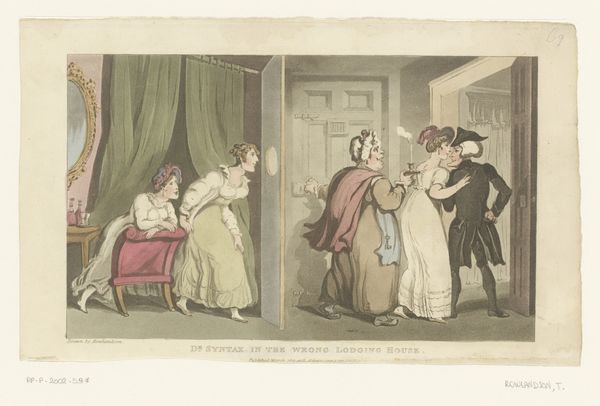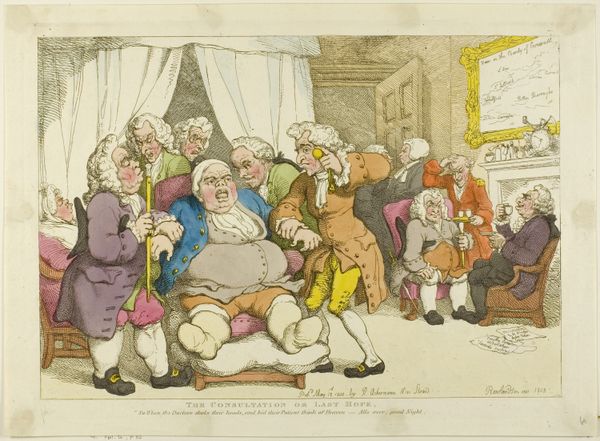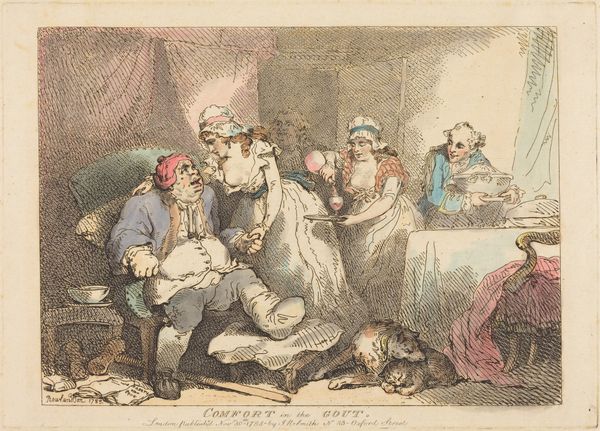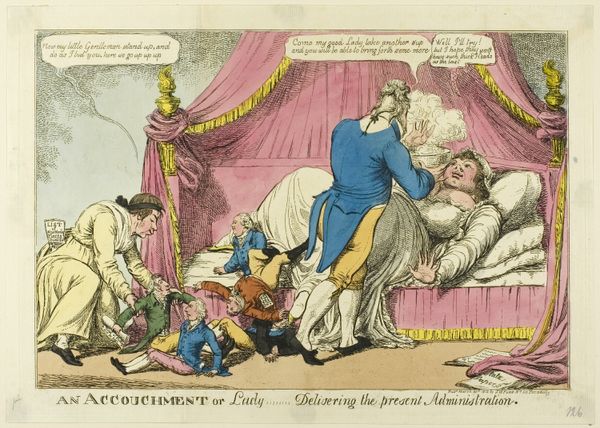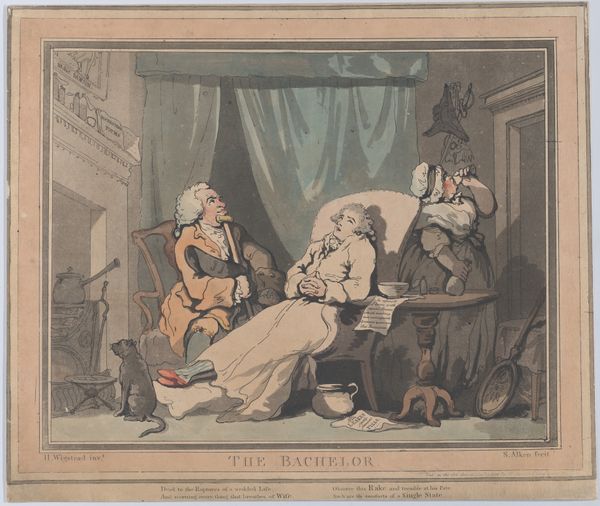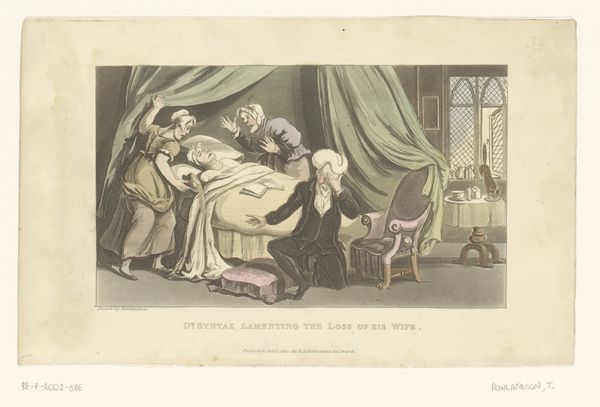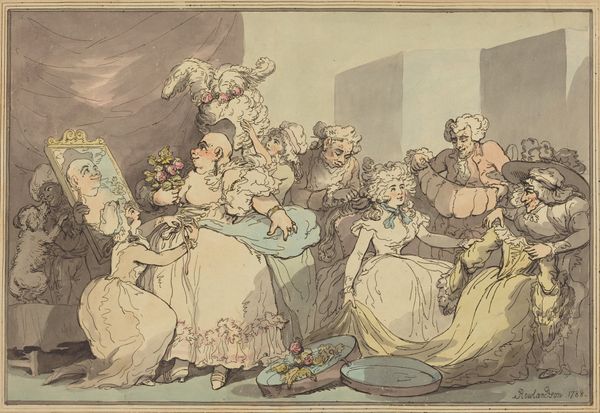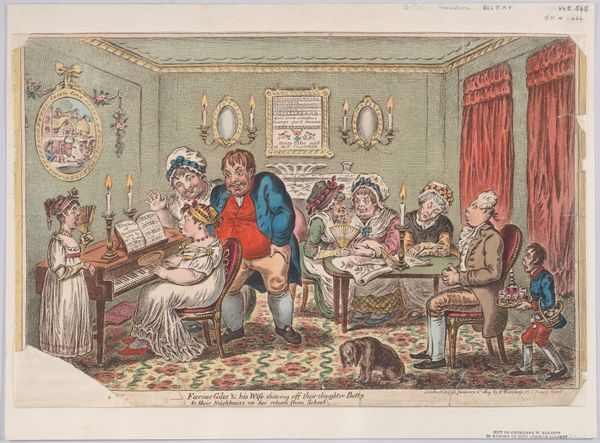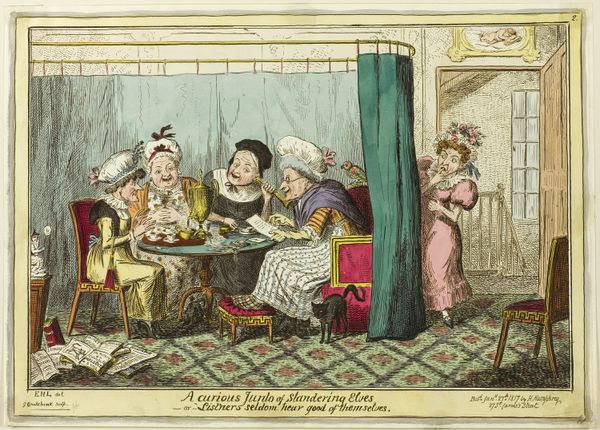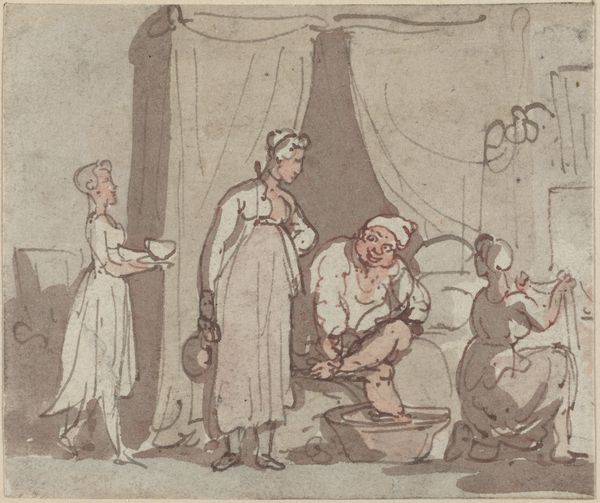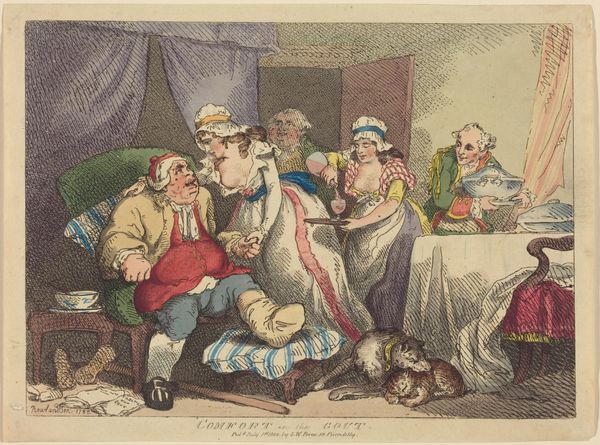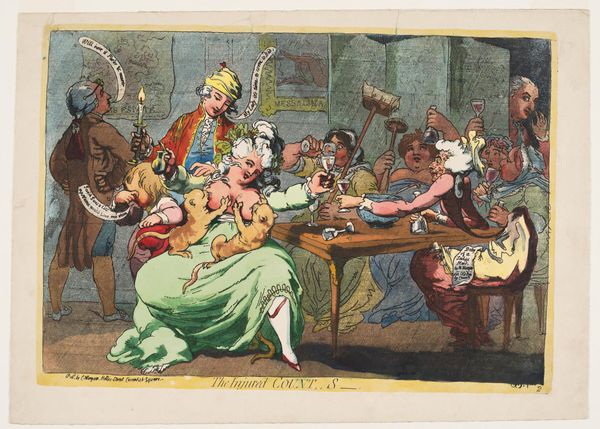
drawing, print
#
drawing
# print
#
caricature
#
romanticism
#
genre-painting
#
history-painting
Dimensions: Sheet (trimmed): 10 1/4 × 14 7/16 in. (26.1 × 36.6 cm)
Copyright: Public Domain
Curator: Here we have Nicolaus Heideloff’s “Falstaff’s Wedding Night,” a print and drawing made around 1807. Editor: My immediate impression is one of overwhelming claustrophobia. All these figures crowding around the apparent main subject, and the stark whiteness broken by sickly greens and pinks—it’s visually jarring, and unsettling. Curator: Indeed. Heideloff masterfully utilizes caricature to critique social themes within this seemingly historical context. Consider how the composition itself funnels our gaze into this cacophony surrounding Falstaff. Note, too, the interplay between the domestic scene and implied political satire through visual puns and exaggerated features. Editor: Yes, the central figure dominates. Falstaff—Shakespeare’s iconic character known for his gluttony, lust, and self-preservation. He seems practically unconscious, almost a casualty, borne by figures who display him, perhaps as the embodiment of a corrupt society. The image feels almost allegorical; like an indictment of desire overwhelming judgment. The candle being held, with its smoky light, speaks to ephemeral or fading understanding of Falstaff's moral decay and looming comeuppance. Curator: The medium also bears consideration. The precision of line, achieved through drawing and printmaking, gives the composition an exacting edge, even with the overt caricature. The application of color, while subtle, draws our focus, framing characters of interest through controlled palettes that play into the reading of its historical commentary on events within its contemporary scope. Editor: And what about the figure preparing herself in the mirror, quite literally, ‘off to the side?’ She is almost unaware or aloof to the chaotic center of activity that is brewing across the room from her, almost a direct reflection of the personal vs public chaos. Curator: Interesting perspective; such placement cleverly speaks to ideas surrounding duality: illusion versus reality, interior versus exterior. A point worthy of greater introspection. Editor: It leaves me considering whether the true subject of the drawing is less about a particular "wedding night" and more about moral commentary through historical lenses; using symbols that cut through eras in artistic expressions. Curator: Precisely, the semiotic richness woven with technique creates its distinct statement. Editor: I will walk away questioning the masks that societies—or we, as individuals—create as well. Thank you.
Comments
No comments
Be the first to comment and join the conversation on the ultimate creative platform.
